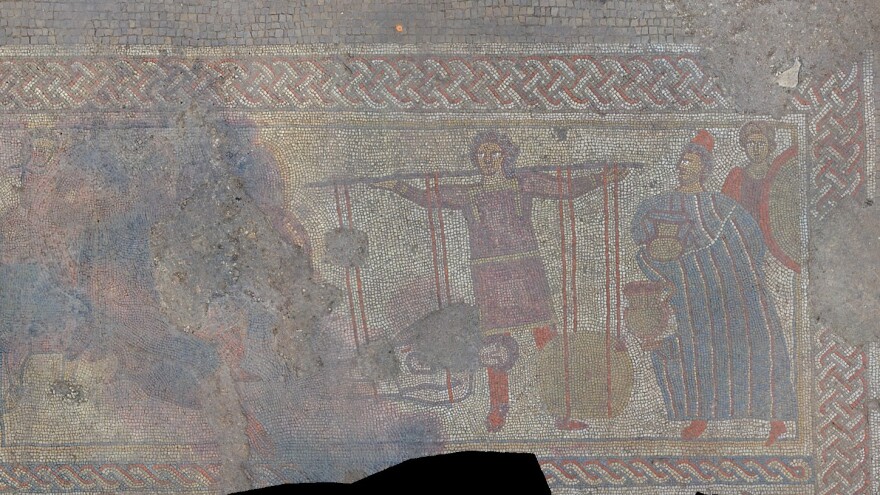Updated November 26, 2021 at 3:42 PM ET
The hits just keep coming for an elite team of British archaeologists.
First they unearthed the remains of King Richard III. The body of the last English king killed in battle — in 1485 — was found underneath a parking lot by members of the University of Leicester Archaeological Services in 2012, more than 500 years later. (As it happens, you can hear their enthusiastic accounting of the discovery on a 12-part podcast series.)
And just this Thursday, ULAS announced it has excavated an important Roman mosaic in the East Midlands depicting the legendary hero Achilles battling Hector during the final days of the Trojan War.
"This is certainly the most exciting Roman mosaic discovery in the UK in the last century," said ULAS project manager John Thomas, who oversaw the excavations, in a release from the university.

The mosaic is believed to date back to the late Roman Empire, roughly 250 to 450, and is part of a massive villa complex buried beneath a farmer's field.
Measuring 36 feet by almost 22 feet, it's about the size of three bowling lanes, and was first spotted by the landowner's son during the pandemic in 2020. After the family contacted the archaeological team at Leicestershire County Council, the site was excavated by ULAS with the help of heritage preservation group Historic England and in liaison with Rutland County Council. (ULAS is described as a commercial unit affiliated with the University of Leicester.)
The mosaic comprised the floor of what was likely a sprawling dining or entertaining area, according to researchers. It's one of only a handful of examples of similar works of art from across Europe centering on this subject. The mosaic may be just the first significant treasure yielded by the site, which Thomas described as "very well-preserved."
Copyright 2022 NPR. To see more, visit https://www.npr.org.





